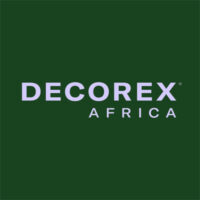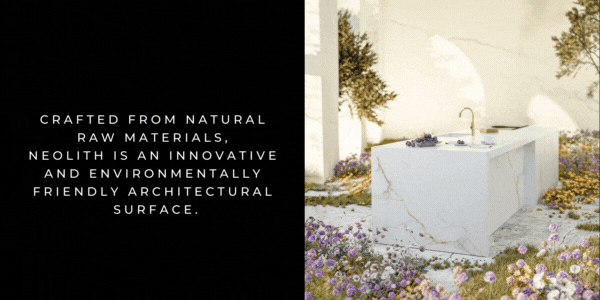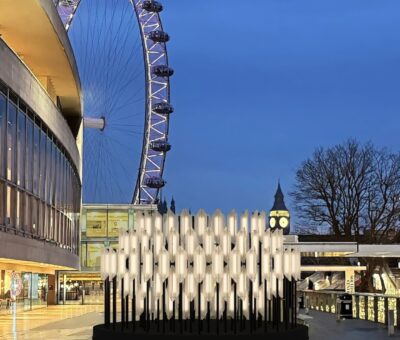Decorex Africa Reflects on Maison&Objet 2025: Emerging Trends, Craftsmanship, and The Soft Life
We caught up with Sian Cullingworth, Business Development & Sales Director at Decorex Africa, and Sandra Jardim, the brand’s Marketing Director, following their recent visit to Maison&Objet September 2025 in Paris. As partners to the renowned design fair, Decorex Africa’s attendance went beyond observation — it was an opportunity to strengthen collaboration, exchange ideas, and deepen a shared commitment to connecting global design communities.
For Cullingworth and Jardim, the visit served as both inspiration and affirmation: a chance to witness the evolving dialogue between craftsmanship, innovation, and storytelling that defines today’s design landscape. In engaging with the fair’s central themes — Objet, craftsmanship, and emerging voices — they reflected on how these ideas echo Decorex Africa’s own mission to elevate South African and African design within the global conversation.
1. What were the standout trends at Maison&Objet that you think will define 2026?
A feeling of warmth and humanity anchored the fair. Nothing felt overly styled or forced. Instead, there was a noticeable return to comfort, tactility, and pieces with character. Objects appeared softer and more personal, with craftsmanship presented through calm confidence rather than grand gestures.
Organic and inviting forms dominated, alongside a genuine appreciation for imperfection and individuality. Design choices favoured comfort and familiarity over statements. The overall impression: people want homes that feel real, lived-in, and emotionally grounded.
2. Which materials or textures caught your eye, and why do you think they’ll be popular?
Texture played a central role.
Materials carried story and tactility — the kind that invites touch. There was a beautiful presence of hand-formed ceramics with soft irregularities, raw and recycled woods with visible grain, natural fibres in woven forms, warm metal finishes that felt gently aged, and subtle surface reliefs that added depth without noise.
These materials feel honest and reassuring, offering a sense of ease and authenticity that reflects the global shift toward calmer, more grounded living.
3. Were there any colours or palettes that felt particularly fresh or unexpected?
Colour stories were warm, grounded, and joyful without being loud. Soft clay tones, warm neutrals, and nature-inspired hues formed the base palette, punctuated by confident accents such as Klein blue, citrus, and rich terracotta.
Colour wasn’t used for spectacle — it was used to express emotion.
4. How did you see technology or innovation influencing design this year?
Innovation was present, but quiet and supportive. Rather than futuristic spectacle, technology was used to enhance material exploration and craftsmanship.
The takeaway: technology is increasingly working with craft — not replacing it, but extending what’s possible.
5. Did you notice any emerging designers or brands that are pushing creative boundaries?
There was a strong presence of young talent and emerging brands showing bold experimentation. Many designers explored material reuse and circularity, approached form in playful and sculptural ways, and introduced colour with light, expressive confidence.
What stood out most was the storytelling — cultural reference and meaning expressed with purpose rather than decoration. This sense of responsibility and imagination resonates deeply with how many African designers are working today.
6. How do you think sustainability is shaping the trends for 2026?
Sustainability no longer appeared as a “trend” — it felt integrated. Rather than overt messaging, it was expressed through material intelligence, small-batch production, and renewed respect for craft and resourcefulness.
Design is moving beyond statements toward thoughtful making and meaningful ownership. Sustainability is now simply part of good design practice — not an add-on or marketing layer.
7. Were there any bold or surprising statements that made you rethink current design norms?
The most powerful idea was the celebration of work-in-progress living. Maison&Objet’s creative direction, Welcome Home, championed spaces and objects that evolve rather than striving for perfection. There was a comfort with imperfection and tactility — an appreciation for pieces that carry process, memory, and signs of life.
It reinforced the idea that homes don’t need to perform or appear “finished.” They can breathe, shift, and grow with their inhabitants. This honesty and humanity in design feels deeply aligned with how many people want to live today.
8. How do you plan to bring the Maison&Objet inspiration into your own projects?
For Decorex Africa, the value lies not in replication, but in translation — bringing the underlying principles of what was seen to the African context, audience, and continent.
A deep respect for craft and material honesty stood out, as well as the emphasis on makers and storytelling. The fair highlighted design that nurtures emotional wellbeing — calm, gentle, and human — supported by thoughtful, long-lasting choices rather than short-term consumption.
Decorex Africa continues to curate layered experiences, platform designers with depth, and evolve how people discover and engage with design.
Most importantly, the visit reaffirmed a belief: Africa is not following the global design conversation — it is contributing to it. Decorex’s role is to keep opening doors, championing stories, and creating platforms where African design can be seen, felt, and valued on its own terms.
9. Looking ahead, what design approach or mindset are you most looking forward to exploring at Decorex 2026?
Decorex Africa is excited to explore “The Soft Life” as its guiding design direction for 2026.
Soft Life is not about indulgence — it’s about creating spaces and products that prioritise ease, presence, comfort, and emotional wellbeing in an overstimulated world. Design is shifting from performance to personal restoration, and Soft Life responds to that with calm, tactile, and deeply human environments.
This direction aligns naturally with South African and broader African design, long rooted in warmth, tactility, hospitality, and soul. Soft Life offers an opportunity to elevate that essence — not as a passing trend, but as a way of living that values balance, care, and connection.
It represents a shift toward design that cares for people, for time, and for emotional environments — and Africa has something powerful and original to contribute to that global conversation.
For more information on Decorex Africa 2025 visit decorex.co.za or follow @decorexafrica.
You might also like...
-
London Design Festival 2025: Design Transforms the City with Landmark Public Installations

This September, London Design Festival returns with its most ambitious edition yet, a city-wide programme of exhibitions, installations, and experiences that explore how design ...
-
Discover the Future of Living at Decorex Joburg 2025

Brimming with unmissable features, the ultimate decor and design experience lands in Joburg this July! Get ready, Joburg. The country’s most significant decor, design, lifestyle ...
-
Ambiente Trends 26+: Brave, Light and Solid Define the Style Worlds of Tomorrow

How do we want to live, work, and dwell in these transformative times? Which colours, shapes, and materials will define spaces for a livable, inspiring ...
-
Do Ho Suh: Walk the House – A Journey Through Memory, Belonging & Space at Tate Modern

Running until October, The Genesis Exhibition: Do Ho Suh – Walk the House brings a landmark survey of the Korean-born, London-based artist’s work to ...

























